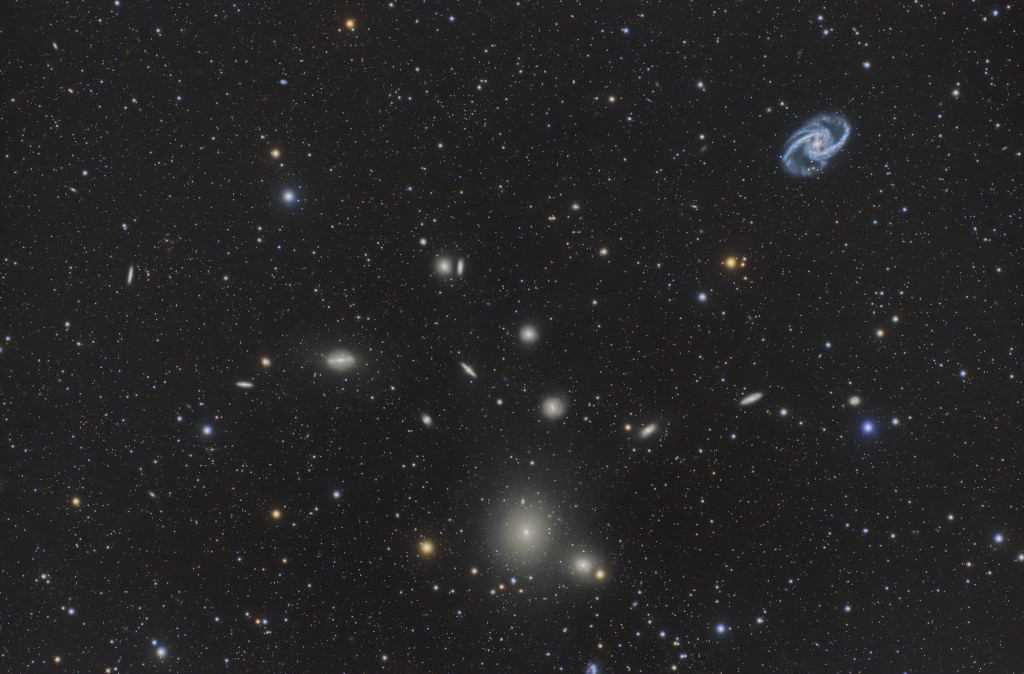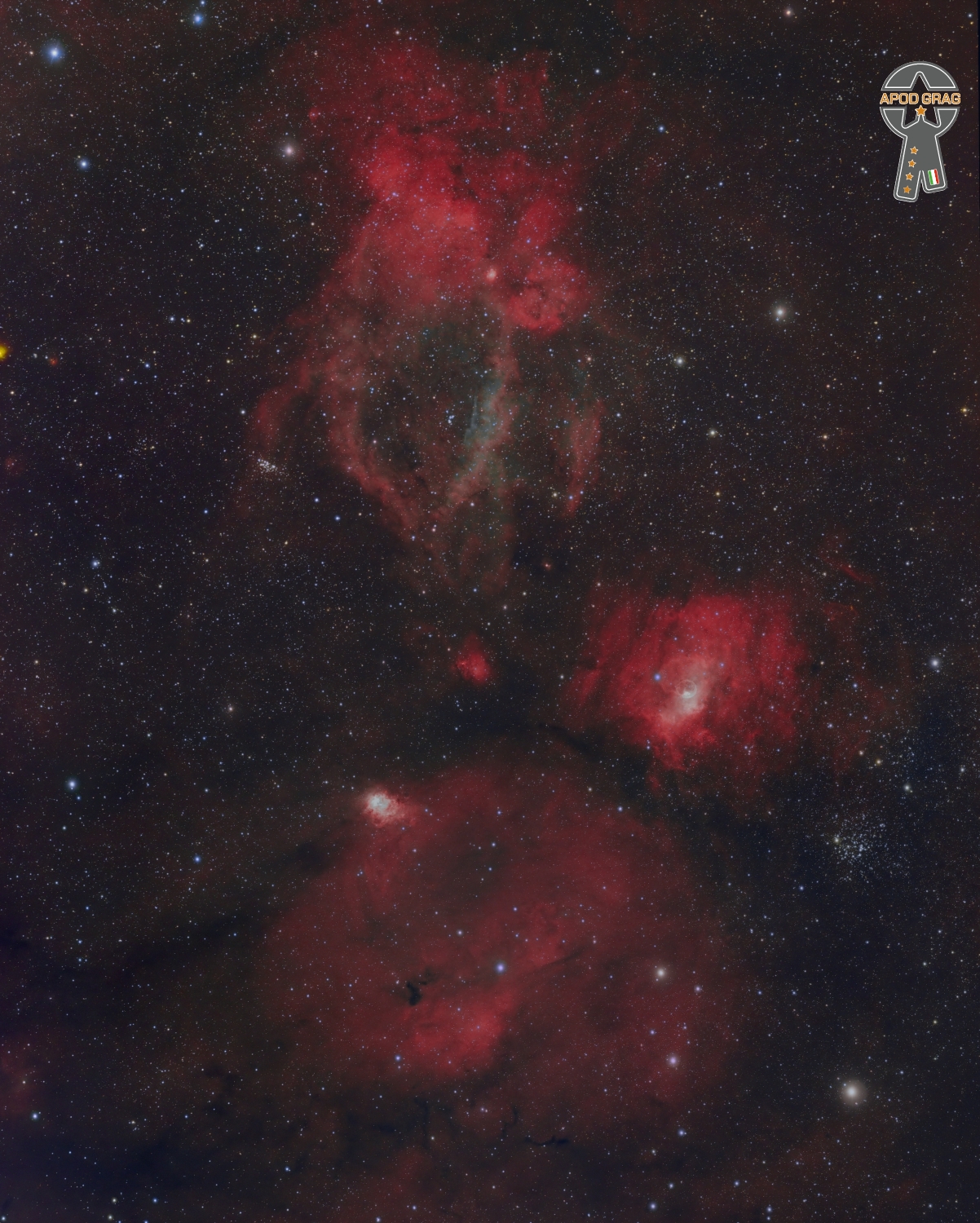Blog
NGC 300 (also known as Caldwell 70) is a spiral galaxy in the constellation Sculptor. It is one of the closest galaxies to the Local Group, and probably lies between the latter and the Sculptor Group. It is the brightest of the five main spirals in the direction of the Sculptor Group. It is inclined at an angle of 42° when viewed from Earth and shares many characteristics of the Triangulum Galaxy. It is 94,000 light-years in diameter, somewhat smaller than the Milky Way, and has an estimated mass of (2.9 ± 0.2) × 1010 M☉

Mable John (November 3, 1930 – August 25, 2022) was an American blues vocalist and was the first female artist signed by Berry Gordy to Motown‘s Tamla label.
John was born in Bastrop, Louisiana, on November 3, 1930, the eldest of at least nine siblings. At a very young age, she and her parents, Mertis and Lillie (Robinson) John, moved north into Arkansas, where her father got a job in a paper mill near Cullendale, where four of her brothers (including R&B singer Little Willie John) and two sisters were born.
more...Joe McPhee (born November 3, 1939) is an American jazz multi-instrumentalist born in Miami, Florida, a player of tenor, alto, and soprano saxophone, the trumpet, flugelhorn and valve trombone. McPhee grew up in Poughkeepsie, New York, and is most notable for his free jazz work done from the late 1960s to the present day.
McPhee was born in Miami, Florida, on November 3, 1939. He began playing trumpet when he was eight, before learning other instruments. He played in various high school and then military bands before starting his recording career. His first recording came in 1967, when he appeared on the Clifford Thornton album entitled Freedom and Unity. McPhee taught himself saxophone at the age of 32 after experiencing the music of John Coltrane, Albert Ayler, and Ornette Coleman. During the late 1960s and early 1970s, McPhee lectured on jazz music at Vassar College.
more...Henry Grimes (November 3, 1935 – April 15, 2020) was an American jazz double bassist and violinist.
After more than a decade of activity and performance, notably as a leading bassist in free jazz, Grimes completely disappeared from the music scene by 1970. Grimes was often presumed to have died, but he was discovered in 2002 and returned to performing.
Henry Alonzo Grimes was born in Philadelphia, to parents who both had been musicians in their youth. He took up the violin at the age of 12, and then began playing tuba, English horn, percussion, finally switching to the double bass at Mastbaum Technical High School. He furthered his musical studies at Juilliard and established a reputation as a versatile bassist by the mid-1950s.
Grimes recorded or performed with pianist Lennie Tristano and saxophonists Lee Konitz, Gerry Mulligan and Sonny Rollins, pianists Thelonious Monk and McCoy Tyner, singer Anita O’Day, clarinetist Benny Goodmanand many others. When bassist Charles Mingus was experimenting with a second bass player in his band, Grimes was the person he selected for the job. One of his earliest appearances on film is captured in the Bert Stern documentary on the Newport Jazz Festival of 1958, Jazz on a Summer’s Day.
more...“Rondeña” belong to Malaga’s singing group. “Rondeña” existed before flamenco, joining it in the 19th century. Its origin is in “fandango” from Malaga, more specifically in ” bandolás”. Some authors suggest that this name comes from the nightly rounds. Other authors believe that it comes from the city of Ronda, as “rodeña” was originated in the homonymous mountains. “Rondeña” has greatly extended through Andalusia during the 19th century. “Rondeña” singing has evolved in recent times with with a decrease in melismatic ornamentation. Its composition ad libitum (without “compas”). Lyrics are related to countryside life. Its structure is a couplet of four eight-syllable verses, usually consonant rhyme. They normally turn into five by repetition of the second one, but also without repetition. Dance displays a rhythm of wild abandon. Others have used the rhythm of the “taranto“, which has many similarities but, being rondeña, more open and evocative.
more...Named for the southern constellation toward which most of its galaxies can be found, the Fornax Cluster is one of the closest clusters of galaxies. About 62 million light-years away, it’s over 20 times more distant than our neighboring Andromeda Galaxy, but only about 10 percent farther along than the better known and more populated Virgo Galaxy Cluster. Seen across this three degree wide field-of-view, almost every yellowish splotch on the image is an elliptical galaxy in the Fornax cluster. Elliptical galaxies NGC 1399 and NGC 1404 are the dominant, bright cluster members toward the bottom center. A standout, large barred spiral galaxy, NGC 1365, is visible on the upper right as a prominent Fornax cluster member.

Keith Noel Emerson (2 November 1944 – 11 March 2016) was an English keyboardist, songwriter, composer and record producer. He played keyboards in a number of bands before finding his first commercial success with the Nice in the late 1960s. He became internationally famous for his work with the Nice, which included writing rock arrangements of classical music. After leaving the Nice in 1970, he was a founding member of Emerson, Lake & Palmer (ELP), one of the early progressive rock supergroups.
Emerson, Lake & Palmer were commercially successful through much of the 1970s, becoming one of the best-known progressive rock groups of the era. Emerson wrote and arranged much of ELP’s music on albums such as Tarkus (1971) and Brain Salad Surgery (1973), combining his own original compositions with classical or traditional pieces adapted into a rock format. Following ELP’s break-up at the end of the 1970s, Emerson pursued a solo career, composed several film soundtracks, and formed the bands Emerson, Lake & Powell and 3 to carry on in the style of ELP. In the early 1990s, ELP reunited for two more albums and several tours before breaking up again in the late 1990s. Emerson also reunited The Nice in 2002 for a tour.
During the 2000s, Emerson resumed his solo career, including touring with his own Keith Emerson Band featuring guitarist Marc Bonilla and collaborating with several orchestras. He reunited with ELP bandmate Greg Lake in 2010 for a duo tour, culminating in a one-off ELP reunion show in London to celebrate the band’s 40th anniversary. Emerson’s last album, The Three Fates Project, with Marc Bonilla and Terje Mikkelsen, was released in 2012. Emerson reportedly suffered from depression and alcoholism, and in his later years developed nerve damage that hampered his playing, making him anxious about upcoming performances. He died of a self-inflicted gunshot wound on 11 March 2016 at his home in Santa Monica, California.
Emerson was widely regarded as one of the top keyboard players of the progressive rock era. AllMusic describes Emerson as “perhaps the greatest, most technically accomplished keyboardist in rock history”. In 2019, readers of Prog voted him the greatest keyboard player in progressive rock.
more...Philip Wells Woods (November 2, 1931 – September 29, 2015) was an American jazz alto saxophonist, clarinetist, bandleader, and composer.
Woods was born in Springfield, Massachusetts. After inheriting a saxophone at age 12, he began taking lessons at a local music shop. His heroes on the alto saxophone included Benny Carter and Johnny Hodges. He studied music with Lennie Tristano at the Manhattan School of Music and at the Juilliard School. His friend, Joe Lopes, coached him on clarinet as there was no saxophone major at Juilliard at the time and received a bachelor’s degree in 1952. Although he did not copy Charlie Parker, Woods was known as the New Bird, a nickname also given to other alto saxophone players such as Sonny Stitt and Cannonball Adderley.
more...NGC 7635, also known as the Bubble Nebula, Sharpless 162, or Caldwell 11, is an H II region emission nebula in the constellation Cassiopeia. It lies close to the open cluster Messier 52. The “bubble” is created by the stellar wind from a massive hot, 8.7 magnitude young central star, SAO 20575 (BD+60°2522). The nebula is near a giant molecular cloud which contains the expansion of the bubble nebula while itself being excited by the hot central star, causing it to glow. It was discovered in November 1787 by William Herschel. The star BD+60°2522 is thought to have a mass of about 44 M.

Richard Roman Grechko (1 November 1946 – 17 March 1990), better known as Ric Grech, was a British rock musician. He is best known for playing bass guitar and violin with the rock band Family as well as in the supergroups Blind Faith and Traffic. He also played with ex-Cream drummer Ginger Baker.
He was born in Bordeaux, France. He was educated at Corpus Christi RC School, Leicester, after attending Sacred Heart Primary School. He played violin in the school orchestra. Grech died on 17 March 1990, aged 43, of liver failure as a result of alcoholism.
more...Seven-time Grammy-nominated percussionist, US Artists Fontanals Fellow, and 2013-2014 SFJAZZ Resident Artistic Director, John Santos, is one of the foremost exponents of Afro-Latin music in the world today. Born in San Francisco, California, November 1, 1955, he was raised in the Puerto Rican and Cape Verdean traditions of his family, surrounded by music. The fertile musical environment of the San Francisco Bay Area shaped his career in a unique way.
His studies of Afro-Latin music have included several trips to New York, Puerto Rico, Cuba, Brazil and Colombia. He is known for his innovative use of traditional forms and instruments in combination with contemporary music, and has earned much respect and recognition as a prolific performer, composer, teacher, writer, radio programmer, and record/event producer whose career has spanned five decades. John has performed and/or recorded with acknowledged, multi-generational masters such as Cachao, Dizzy Gillespie, Tito Puente, Bebo Valdés, Max Roach, Eddie Palmieri, Patato Valdés, Lázaro Ros, Bobby Hutcherson, Manny Oquendo, Chucho Valdes, Paquito D’Rivera, Buenavista Social Club, Chocolate Armenteros, John Handy, Billy Cobham, Zakir Hussain, Hermeto Pascoal, George Cables, Generoso Jimenez, Joe Henderson, Ernesto Oviedo, Regina Carter, Chester Thompson, Francisco Aguabella, John Faddis, Ed Thigpen, Giovanni Hidalgo, Steve Turre, McCoy Tyner, Batacumbele, Poncho Sanchez, Omar Sosa, Mel Martin, Ignacio Berroa, Danilo Perez, Los Pleneros de la 21, Jose Luis “Changuito” Quintana, Armando Peraza, Pancho Quinto, Tootie Heath, Art Farmer, Pupy Pedroso, Jacqueline Castellanos, Malonga Casquelord, CK Ladzekpo, Pancho Terry, Juan De Dios Ramos, Carlos Aldama, Yosvany Terry, Dafnis Prieto, Oscar Castro Neves, Mark Murphy, Orkestra Rumpilezz, Larry Coryell, Lázaro Galarraga, Regino Jimenez, Luis Daniel “Chichito” Cepeda, Modesto Cepeda, Guillermo “Negro” Triana, Lázaro Rizo, Raul “Lali” Gonzalez, Amado DeDeus, Pedrito Martinez, Jose Lugo, Jerry Medina, Orestes Vilató, Kamau Daaood, Johnny Rodriguez, Sonny Bravo, Arturo Sandoval, Nestor Torres, Anthony Carrillo, Paoli Mejías, Raul Rekow, Andy Gonzalez, Jerry Gonzalez, Jovino Santos Neto, Lalo Schifrin, Gema y Pavel, Pete Escovedo, Claudia Gómez, Maria Márquez, Jon Jang, Wayne Wallace, Mark Levine, Elio Villafranca, Bruce Forman, Linda Tillery, Charlie Hunter, Joyce Cooling, Bobby Matos, Mark Weinstein, Roberto Borrell, Sandy Perez, Jesus Diaz, Roman Diaz, Pablo Menendez y Mezcla, Yma Sumac, Rhiannon, Larry Vukovich, Kenny Washington, Faye Carol, Kellye Gray, Destani Wolf, Kimiko Joy, Kenny Endo, Abhijit Banerjee, Erik Jekabson, and Carlos Santana, among others.
John is widely respected as one of the top writers, teachers and historians in the field and was a member of the Latin Jazz Advisory Committee of the Smithsonian Institution. He is currently part of the faculty at the California Jazz Conservatory (Berkeley, CA), San Francisco State University, Jazz Camp West (since 1986) and the College of San Mateo (CA). He has conducted countless workshops, lectures and clinics in the US, Latin America and Europe since 1973 at institutions of all types including the Smithsonian, the Adventures in Music program of the San Francisco Symphony, the Berklee School of Music in Boston, UCLA, Yale, Stanford, the University of Wisconsin at Madison, the University of Michigan, Temple University, Brigham Young University, Cal State Monterey Bay, Cal State Hayward, Cal State Fresno, the University of Colorado, Yakima Valley Community College, Ohio Music Education Association, the Afro-Cuban Drumming and Dance Program at Humboldt State University (CA), Cal State Sonoma, Cal State Sacramento, Cal State San Jose, Tulane and Dillard Universities of Louisiana, Jazz Camp West, the San Francisco Conservatory of Music, the Los Angeles Music Academy, the Museum of the African Diaspora (San Francisco), the Lafayette Summer Music Program (CA), the Oakland Public Conservatory, and La Universidad Inter-Americana in San Germán Puerto Rico. He has contributed to the international magazines and publications African Arts Journal, Poetry in Flight, Percussive Notes, Modern Drummer, Modern Percussionist, and Latin Percussionist.
more...Lou Donaldson (born November 1, 1926) is an American retired jazz alto saxophonist. He is best known for his soulful, bluesy approach to playing the alto saxophone, although in his formative years he was, as many were of the bebop era, heavily influenced by Charlie Parker.
Donaldson was born in Badin, North Carolina, United States. He attended North Carolina Agricultural and Technical State University in Greensboro in the early 1940s. He enlisted in the U.S. Navy during World War II and was trained at the Great Lakes bases in Chicago where he was introduced to bop music in the lively club scene.
more...More Posts
- Ray Mantilla Day
- Cal Green Day
- World Music with ESTRELLA MORENTE
- Daily Roots with Sizzla
- The Cosmos with NGC 5426/27
- Eric Reed Day
- Lalo Schifrin
- Skip James Day
- World Music with Alekos K. Vretos
- Daily Roots with Ijahman Levy
- The Cosmos with M16
- Eric Dolphy Day
- Lazy Lester Day
- World Music with Obo Addy
- Daily Roots with Bob Marley
- The Cosmos with Fleming 1
- Ernest Ranglin Day
- Billy Drummond Day
- World Music with Lela Tataraidze
- Daily Roots with the Skatalites


